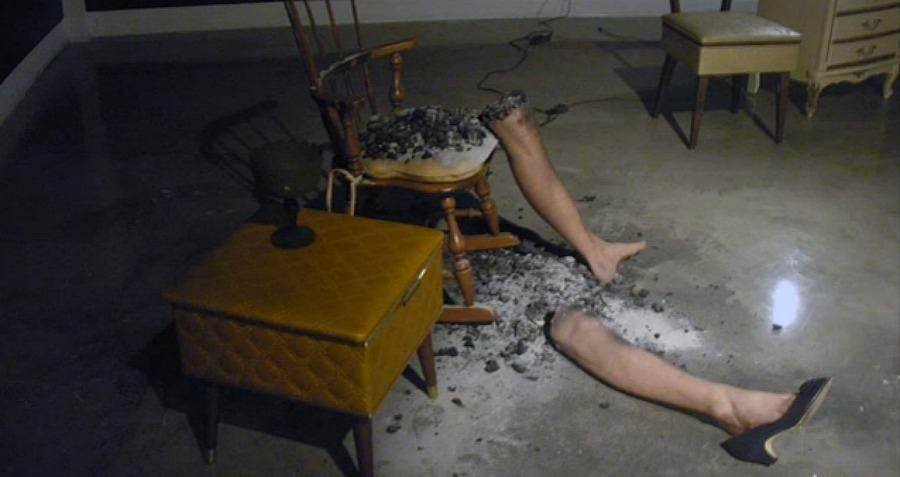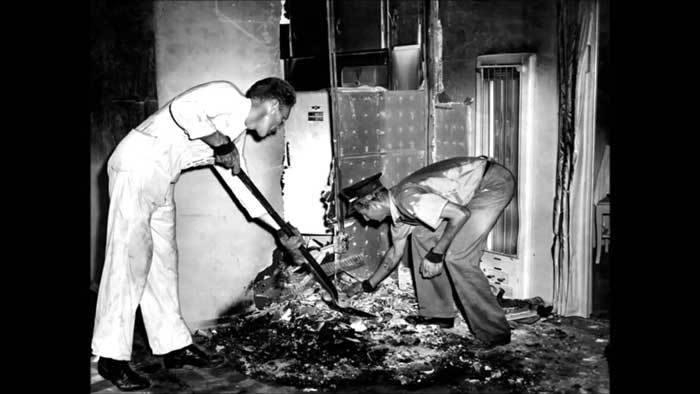
Human Spontaneous Combustion
#longread
Hello friends of yoo.rs, the topic to be discussed from the first time I read it fascinated me, I have always been a lover of supernatural and inexplicable things and this is one of them.
Much has been said about such a phenomenon which arouses fascination and amazement.
On Christmas Eve 1885 in the small town of Seneca, Illinois. A woman named Matilda Rooney dies with her husband under supposedly unusual circumstances: Matilda burst into flames.
Apparently, the woman was alone in her kitchen when it happened. Apparently the fire quickly incinerated her entire body except her feet. The incident also took the life of her husband, Patrick. The man was found suffocated by fumes in another room of the house.
The tragedy stumped investigators. There was no reason to suspect something strange. The reconstruction of the scene explained that that night the Rooneys were relaxing and drinking whiskey. A farmer who had spent a few hours with them did not notice anything out of the ordinary.
Also, no source of ignition could be found for the fire. Although the flames were intense enough to reduce Matilda Rooney to ashes, they had not spread to the rest of the room. The fire seemed to have started in her body and there she remained confined to the end.
It seemed that the Rooneys were victims of the enigmatic phenomenon of spontaneous combustion.
We jump back in time to December 22, 2010, more than a century since the first case. 76-year-old Michael Faherty is found dead at his home in Galway, Ireland. His body showed severe burns.
As in the case of Matilda, the investigators found no source of ignition near the body or signs of something unusual, so they ruled out any type of fire nearby at the scene. It so happens that by eliminating both factors, the forensic experts only had Faherty's scorched body and fire damage to both the ceiling and the floor below him to try to explain what happened to the old man.
After considering it for days, a coroner determined that Faherty's cause of death was human spontaneous combustion, a decision that generated considerable controversy.
The truth is that between Matilda and Faherty there were many more alleged cases, and history and literature speak of this possibility for several centuries.
Origin and cases
The phenomenon has its roots (medically speaking) in the 18th century. Paul Rolli, a fellow of the Royal Society of London, the oldest surviving scientific academy on the planet, coined the term in a 1744 paper titled Philosophical Transactions, and described it as “a process in which a human body is supposed to catch fire as a result of heat generated by internal chemical activity, but without evidence of an external source of ignition ”.
It is said that Countess Cornelia Zangari di Bandi of Cesena suffered a similar fate in the summer of 1745. Di Bandi went to bed early and the next morning the Countess's maid found her in ashes. Only her partially burned head and her legs remained. Although the countess had two candles in her room, her wicks were intact.
Virtually all cases lead to the same puzzle. First of all, fire is limited to the person and their immediate surroundings. Also, it is not uncommon to find burns and smoke damage just above and below the victim's body. Eventually her torso is reduced to ash, leaving only her limbs intact.
In fiction, the most notorious case occurred with the work Bleak House by Charles Dickens. The author defended his use of spontaneous combustion against accusations of deception by citing several famous cases and the trials of eminent physicians claiming that such a thing was possible.
The public accepted it for the most part on moral grounds. The victims were often alcoholic and overweight, and there were more women than men, so there was a general perception that it was some kind of retribution for a debauched and / or decadent lifestyle. This idea was reinforced by journalistic reports, often sensational, on suspicious cases.
Explanations and science
At this point it is time to ask ourselves the question, Is spontaneous combustion of human beings real? Is the possibility of suddenly bursting into flames something to consider?
The short answer is the simplest: possibly not. Although more than 200 cases have been reported worldwide, it is considered more of a phenomenon than a medically recognized cause of death by most of the scientific community. And it is that none of the scientific explanations proposed for how a body would spontaneously burst into flames has been subjected to scrutiny.
Some of the first proposed mechanisms are based on outdated medical ideas, such as the notion that an ignition could be the result of an internal imbalance in the body. The Victorian explanation that alcohol makes the body flammable doesn't work either, given that alcohol concentrations, even in the most intoxicated people, are too low and an external ignition source would be required.
Although researchers have not been able to successfully locate a different possible cause of death, they are not convinced that human spontaneous combustion was anything more than an accident, and for some specific reasons.
First, limiting the damage to the areas surrounding the victim is not as uncommon as it sounds. Many fires are self-limiting and die from natural flora when they run out of fuel. And because fires tend to burn upward rather than outward, the sight of a badly burned body in the middle of an untouched room might seem strange (to say the least), though it certainly wouldn't be considered abnormal.
In the 20th century, forensic scientists noted the “wick effect”, meaning that clothing worn by a victim could absorb melted fat, acting like the wick in a candle and creating the conditions for the body to burn for a prolonged period.
In fact, experiments have shown that this effect can produce many of the unusual characteristics associated with human spontaneous combustion, such as complete or near burning of the body and the lack of fire damage in the victim's environment.
Therefore, the possible explanation for suspected cases of spontaneous combustion is that there is an external ignition source (a match, a cigarette, an electrical spark) that triggers the wick effect, although the evidence of this is destroyed by fire.
Many victims were discovered near a fireplace or with a burning cigarette nearby, and a good number of them were last seen having a drink. Although alcohol does not make the body more flammable, severe drunkenness or other forms of impairment can be a factor in some of these deaths, as the victim may be unable to react to a slowly developing fire.
And yes, under normal circumstances the human body, which is made up of 60-70% water, simply does not have the elements necessary for combustion: high heat and flammable material. But the combination of alcohol and an ignition source creates a scenario that also includes the agents necessary to create and maintain a fire.
Be that as it may, and because almost all reported cases of spontaneous combustion occurred without witnesses (and many of them were elderly), it is difficult to conclude whether these deaths were simply the result of an accident of drunkenness, sleep or some other accidental element.
In fact, of the 200 reported cases, only a dozen have been thoroughly investigated, which could possibly lead to further speculation. Seen like this, the truth of human spontaneous combustion appears to be nothing more than smoke.
https://es.gizmodo.com/combustion-espontanea-humana-puede-un-cuerpo-humano-e-1829105015
- Comments (0)
- Recommended
- Milestones









Here are your recommended items...
Here are your milestones...



